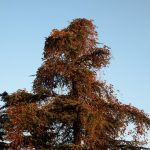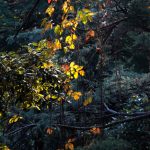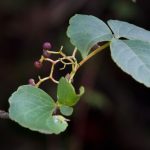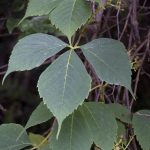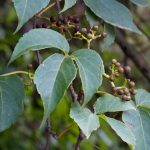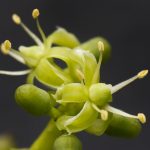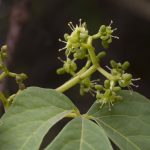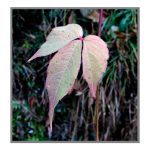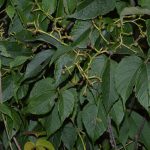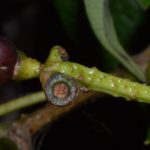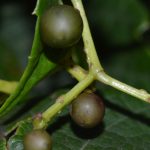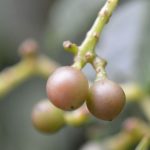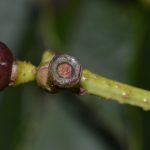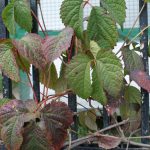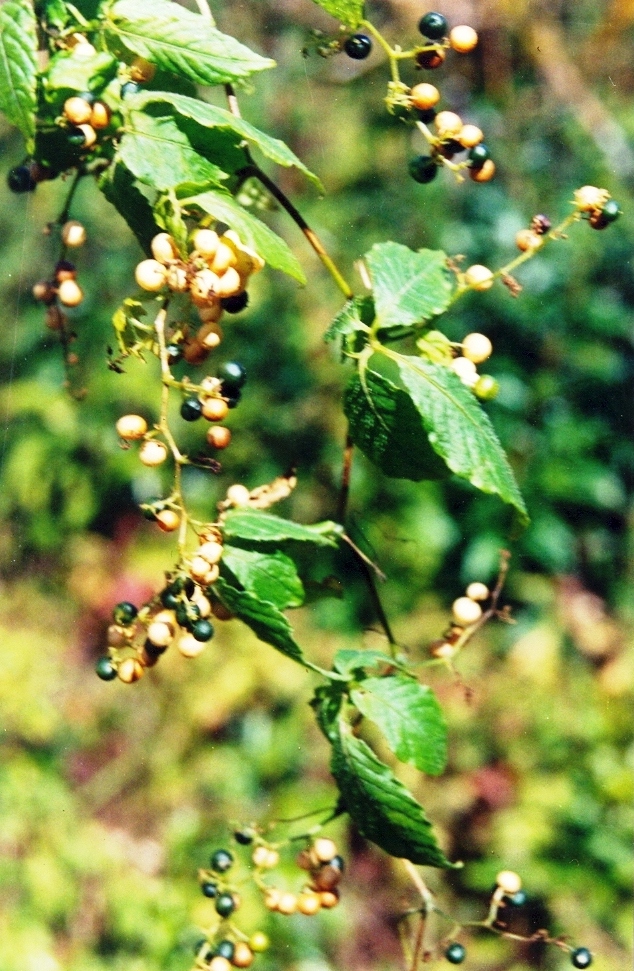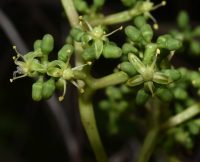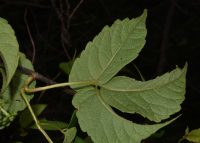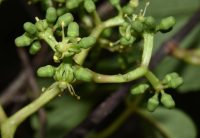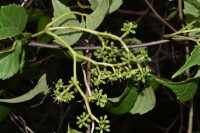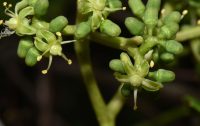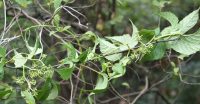|
Parthenocissus semicordata (Wall.) Planch., Monogr. Phan. 5: 451 1887 (Syn: Ampelopsis himalayana Royle (unresolved); Parthenocissus cuspidifera var. pubifolia C.L. Li; Parthenocissus himalayana (Royle) Planch.; Parthenocissus himalayana var. rubrifolia (H. Lév. & Vaniot) Gagnep.; Parthenocissus himalayana var. vestita (Royle) Hand.-Mazz.; Parthenocissus semicordata var. rubrifolia (H. Lév. & Vaniot) C.L. Li; Parthenocissus semicordata var. semicordata ; Psedera himalayana (Royle) C.K. Schneid.; Vitis himalayana (Royle) Brandis; Vitis himalayana var. semicordata (Wall.) Wall.; Vitis himalayana var. semicordata (Wall.) M.A. Lawson; Vitis rubrifolia H. Lév. & Vaniot; Vitis semicordata Wall.; Vitis semicordata var. himalayana (Royle) Kurz ex Hance);
. NW. India (Morni Hills), Nepal to Central China and W. Malesia: Assam, Bangladesh, China North-Central, China South-Central, China Southeast, East Himalaya, India, Jawa, Laos, Malaya, Myanmar, Nansei-shoto, Nepal, Pakistan, Taiwan, Thailand, Tibet, Vietnam, West Himalaya as per POWO; .
Common name: Himalayan Woodbine, Virginia Creeper
. Parthenocissus semicordata (Wall) Planch. 1811 (synonym: P. himalayana) is a creeper related to the grapevine family. It is a native plant of the Himalaya.[1] Its name is derived from Latin ‘corda’ meaning heart. P.semicordata can grow in pots or on slopes. It is propagated from seeds or cuttings.
P. semicordata is a vigorous climber. It grows three leaves. Like most of the species of Parthenocissus it uses suction cups to hold itself to walls or trees. It has small fruit which look like grapes and are dark blue, almost black when ripe.
(From Wikipedia on 13.11.14)
.
SK693 02 AUG-2017:ID : 15 posts by 3 authors. Attachments (3) Vitaceae? Yes, Vitaceae member In the absence of opened flower I guess it is Cayratia trifolia (L.)Domin Looks like matching with Cayratia thomsonii (M. A. Lawson) Suess. Please validate.
Does not match with images & illustration of Yua thomsonii var. thomsonii (syn. Cayratia thomsonii (M. A. Lawson) Suessenguth) at
Could it be Cayratia trifolia (L.) Domin ?? But elevation does not match.
Pl. check other Cayratia species available in efi at No match I guess ! Ok
Parthenocissus semicordata (Wall.) Planch. ??
http://www.efloras.org/florataxon.aspx?flora_id=110&taxon_id=242336015 Thank you …! Nepali Names : बाख्रे लहरा Baakhre Laharaa / चर्चरे Charchare / परेनु Parenu
Altitude: 1570 m.
Date: 14 September 2019
Habit : Wild
Cayratia trifolia (L.) Domin ??
First impression is cayratia trifolia. Even fruits look like it ! in India we have an abundance of “benign” three leaved plants and trees. yes seems so, … is on right track. unlike the three leaved vines that are toxic, in the west I shall wait for fruits to ripen. .
This wild creeper has draped our cedars and other trees in warm autumnal colours. What vine is this?
Mountain slopes around Mcleodganj, Dharamshala, HP
06 November 2014
1750m Parthenocissus semicordata (Vitaceae). looks like Virginia creeper, but does not quite make it.
I am glad … knows the plant… no wonder looks different, this is the himalayan variety.. even the fall colors are different not just the leaf anatomy. Parthenocissus semicordata has become a menace in Devdar Forests these days. no wonder it did not quite fit the bill for virginnia creeper
I am glad to know it identity is different
Superb images!!! .
Location: Sundarijal, Kathmandu
Date: 30 September 2019
Elevation: 1930 m.
Habit : Wild Attachments (1)- 6 mb. . Parthenocissus semicordata from Manali-GS13102020-2 : 1 post by 1 author. Attachments (1)
Parthenocissus semicordata Manali, 23-10-2009
Climber from Sikkim for ID please. : 4 posts by 3 authors. Attachments (1) The species definitely belong to vitaceae family. The genus could be parthenocissus. You need to confirm though.. Thank you very much Sir. . SK 3816 23 July 2023: 3 images. Location: Taplejung, East Nepal
Date: July 2023
Elevation: 1200 m.
Habit : Wild
Images sent by a friend, Mr. Sajan Subedi!
Vitaceae.
Parthenocissus ?? Yes, the following is a possibility: leaves in the images are not clear for observation to confirm the species sir
can we have a close picture is possible .
Date: 12 June 2024
Elevation: 1407m.
Habit: Wild
. References: |
Parthenocissus semicordata
Updated on December 24, 2024

